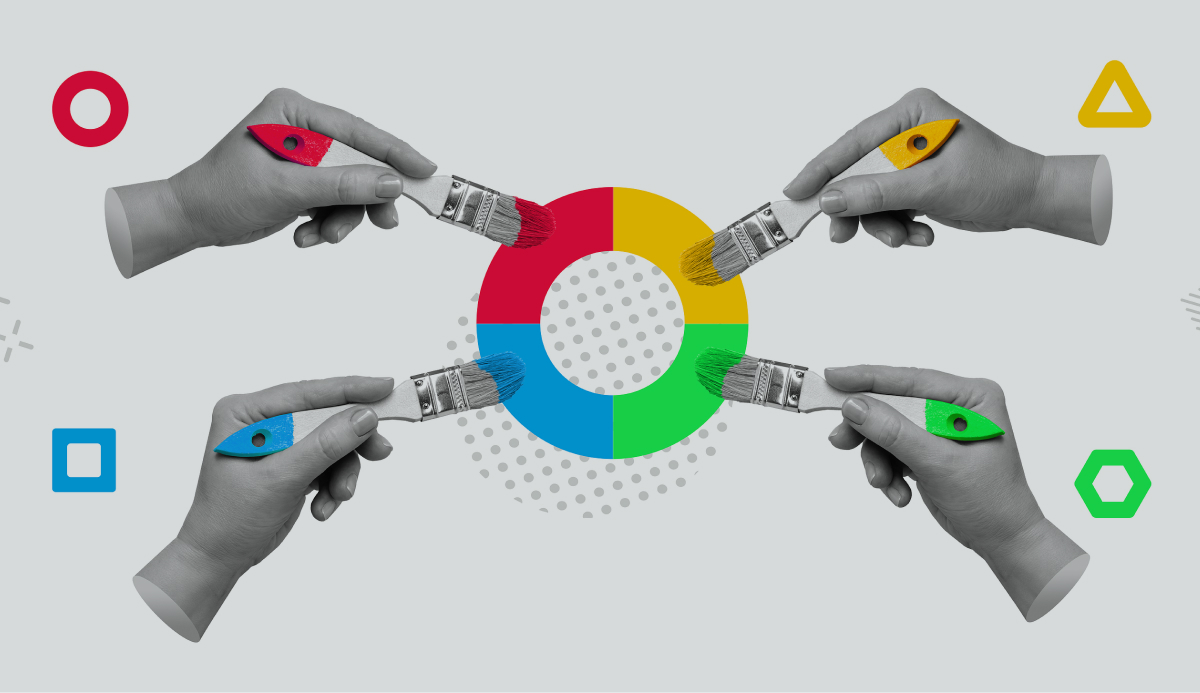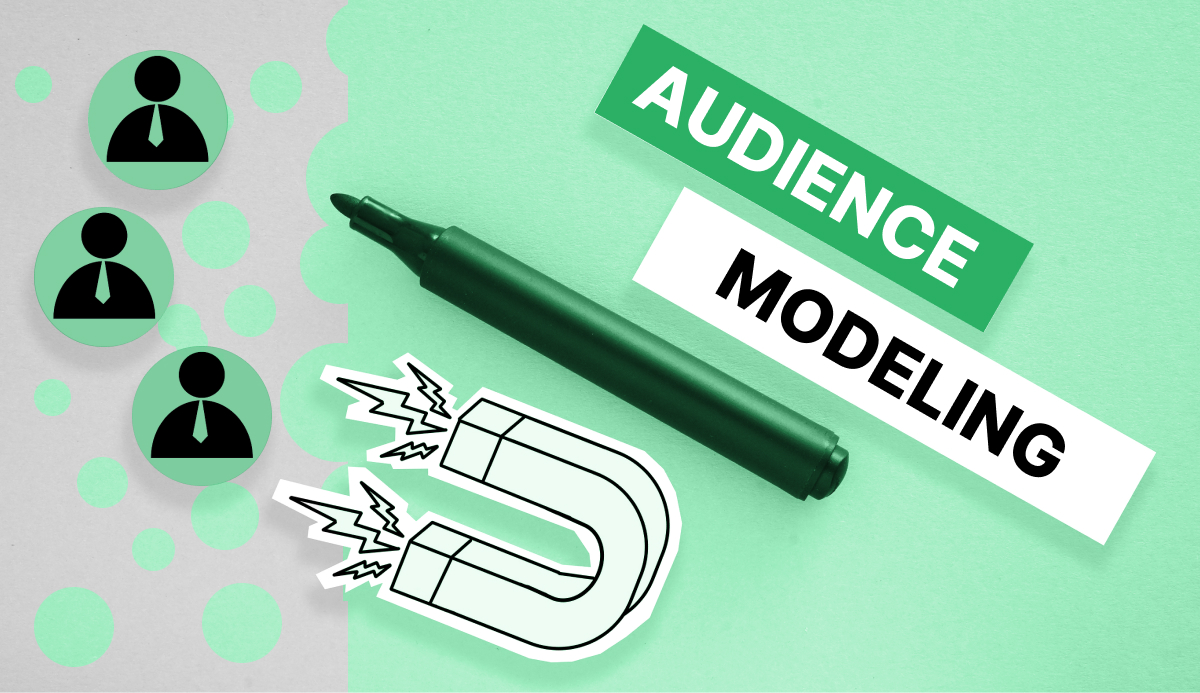
Regardless of the business you’re in, understanding and connecting with the target audience you’re selling to is crucial. That's where audience modeling comes into play. The question is though, what is audience modeling and how does it work?
In this article, we'll delve into the world of audience modeling, explore its significance, different types, and the process behind it. We'll also uncover how audience modeling empowers marketers to create targeted advertising, personalize content, and even inform product development. Along the way, we'll address ethical considerations and potential biases. By embracing audience modeling, marketers can gain invaluable insights and make informed decisions to thrive in today's competitive marketplace.
Audience Modeling Defined
Audience modeling is a strategic approach that involves analyzing and understanding the characteristics, behaviors, and preferences of a target audience to inform marketing and advertising decisions.
It utilizes data-driven insights to create detailed profiles or segments of the target audience, enabling marketers to tailor their strategies and messages more effectively.
Why is audience modeling so important in marketing and advertising?
By gaining a deep understanding of their target audience, marketers can optimize their campaigns to resonate with the right people at the right time. It empowers marketers to refine their strategies, personalize their communications, and optimize their campaigns for maximum impact. By leveraging data-driven insights, businesses can drive engagement, conversions, and customer loyalty while gaining a competitive edge in the marketplace.
Understanding Audience Modeling - The Objectives and Benefits
At its core, audience modeling involves analyzing and understanding the characteristics, behaviors, and preferences of a target audience to inform marketing and advertising strategies. It encompasses gathering data from various sources, such as:
- Demographics
- Psychographics, and
- Behavior.
This data combined with the use of analytical techniques helps marketing teams to uncover meaningful insights. The objectives of audience modeling include identifying distinct audience segments, developing targeted messaging and content, optimizing marketing campaigns, and enhancing the overall customer experience.
By gaining a deep understanding of their audience, marketers can:
- Deliver personalized and relevant communications
- Increase customer engagement and loyalty
- Achieve higher conversion rates, and
- Drive business growth.
When audience modeling is utilized effectively, a business can better determine how to allocate their resources more efficiently.
Types of Audience Models

Audience modeling encompasses various types of models that provide valuable insights into different aspects of the target audience. These models include demographic models, psychographic models, and behavioral models.
1. Demographic Models
Demographic models focus on the measurable characteristics of the audience, such as age, gender, income, education, and geographic location. These models help marketers understand the broad demographic makeup of their target audience.
For example, a demographic model may identify that a particular product appeals more to females aged 25-34 with higher incomes.
Demographic data is collected through sources like:
- Surveys
- Census data
- Customer databases, and
- Social media profiles.
Marketers use this data to segment their audience based on demographic attributes and customize marketing strategies accordingly.
2. Psychographic Models
Psychographic models delve into the psychological and lifestyle characteristics of the audience, such as interests, values, opinions, attitudes, and motivations. These models provide insights into the audience's personality traits, behaviors, and purchasing preferences.
Psychographic data is collected through:
- Surveys
- Interviews
- Social media monitoring, and
- Customer interactions.
For instance, a psychographic model may reveal that a subset of the target audience values sustainability and eco-friendly products. This information helps marketers tailor their messaging and positioning to resonate with the audience's values and aspirations.
3. Behavioral Models
Behavioral models analyze actual consumer behaviors, such as:
- Purchase history
- Browsing patterns
- Engagement with marketing content, and
- Interactions with the brand.
These models provide insights into the actions, preferences, and intent of the audience. For example, a behavioral model may identify customers who frequently purchase specific product categories or exhibit loyalty towards the brand.
Behavioral data is collected through
- Customer tracking systems
- Website analytics
- Purchase history, and
- Customer feedback.
Marketers leverage this data to create personalized experiences, optimize marketing campaigns, and predict future behavior (i.e. recommending similar products or sending targeted offers).
The Process of Audience Modeling

The process of audience modeling involves several key steps, including data collection, data analysis, and creating audience segments.
Step 1 - Data collection
To build accurate audience models, marketers rely on various sources of data. These sources include demographic information collected from surveys, customer databases, and public records. Psychographic data can be gathered through sources like interviews, and social media monitoring, while behavioral data comes from customer tracking systems, website analytics, and point-of-sale purchase history. Additionally, data can be obtained from third-party providers, market research studies, and online sources. Techniques for gathering relevant data encompass methods such as surveys, interviews, data mining, web scraping, and social media listening. Marketers often employ a combination of these techniques to gather a comprehensive dataset.
Step 2 - Data analysis
Once the data is collected, the next step is to analyze it to uncover patterns and insights. Exploratory data analysis techniques are used to gain a preliminary understanding of the data and identify trends, correlations, and outliers. Statistical methods, such as regression analysis, clustering, and factor analysis, can be applied to uncover relationships and associations within the data. Machine learning techniques, including predictive modeling, classification, and recommendation algorithms, are also utilized to extract valuable insights from the data. These methods help marketers identify meaningful patterns and trends in the audience data, enabling them to make informed decisions.
Step 3 - Creating audience segments
Based on the data analysis, marketers can develop distinct audience segments. Segmentation involves grouping individuals with similar characteristics, behaviors, or preferences into specific segments. Marketers define the characteristics and attributes of each segment based on the data analysis findings. These attributes can include demographic traits, psychographic profiles, purchasing behaviors, or any other relevant variables identified during the analysis. By creating well-defined audience segments, marketers can tailor their marketing strategies, messages, and content to address the specific needs and preferences of each segment effectively.
The process of audience modeling is iterative and ongoing, as new data is continuously collected, analyzed, and used to refine the audience segments. By leveraging robust data collection techniques, advanced data analysis methods, and thoughtful segmentation, marketers can gain deep insights into their target audience and drive more impactful marketing campaigns.
Applications of Audience Modeling

Audience modeling has numerous applications in marketing and advertising, including targeted advertising, content personalization, and product development.
Targeted advertising
When you understand the characteristics, behaviors, and preferences of your target audience, marketers can deliver highly relevant and personalized ads to specific segments. Audience modeling allows advertisers to identify the most receptive audience for their products or services, resulting in increased conversion rates and improved return on investment. Successful targeted advertising campaigns include examples like Nike's personalized ads that cater to individual preferences and Spotify's customized playlists based on user listening habits.
Content personalization
Audience modeling empowers marketers to tailor content based on audience preferences. By analyzing audience data, marketers can identify the interests, needs, and behaviors of their target audience and create personalized content that resonates with them. This level of personalization enhances the customer experience, improves engagement, and strengthens brand loyalty. The benefits of personalized content include higher click-through rates, increased time spent on websites, and improved conversion rates. Companies like Netflix and Amazon excel in content personalization by providing personalized recommendations based on users' viewing and purchase history.
Product development
Audience modeling plays a crucial role in informing product development decisions. By understanding the needs, preferences, and pain points of their target audience, companies can develop products that better align with customer expectations. Audience insights derived from modeling can help identify gaps in the market, guide feature prioritization, and inform product enhancements. Case studies of companies utilizing audience insights for product innovation include Apple, which uses audience modeling to design intuitive user interfaces and features, and Tesla, which leverages audience data to inform the development of electric vehicles that meet the specific demands of their target audience.
Challenges and Considerations with Audience Modeling
Ethical considerations
Audience modeling raises ethical concerns regarding the collection and use of personal data. Marketers must ensure that data is obtained and used in a transparent and consent-driven manner. It is important to respect individual privacy rights, comply with applicable regulations, and provide options for individuals to control their data and opt-out if desired.
Data privacy and security concerns
Because audience modeling relies on the collection and analysis of vast amounts of data, it can raise concerns about data privacy and security. Marketers need to implement robust data protection measures, including secure storage, encryption, and data anonymization. It is crucial to comply with relevant data protection laws and regulations to safeguard the privacy and security of individuals' information.
Overcoming potential biases in audience modeling
Biases can emerge from various sources, such as data collection methods, sample selection, or algorithmic biases. Marketers need to be vigilant in identifying and addressing these biases to ensure fair and accurate representation of the target audience. Regular evaluation, validation, and recalibration of models can help mitigate biases and enhance the accuracy of audience insights.
To overcome these challenges and ensure responsible audience modeling practices, marketers should prioritize transparency, accountability, and user-centricity. It is crucial to adopt clear policies and guidelines for data collection, usage, and storage. Providing individuals with control over their data and offering clear options for opting out or adjusting preferences can foster trust and engagement. Regular audits and assessments of audience models can help identify and rectify potential biases. Collaborating with cross-functional teams, including legal, privacy, and compliance experts, can ensure adherence to ethical standards and regulatory requirements in audience modeling practices.
Audience Modeling is the Future Of Marketing and Advertising
What is audience modeling? It's your ticket to precise ad targeting, personalized communication, enhanced ROI, and improved product development. Bottom line, it's the competitive edge companies just like yours have been looking for!
It plays a vital role in marketing and advertising by providing insights into the characteristics, behaviors, and preferences of target audiences. However, it is essential to address ethical considerations, data privacy concerns, and potential biases to ensure responsible and transparent practices.
Looking ahead, the future of audience modeling lies in advancements in data analytics, artificial intelligence, and automation, allowing marketers to gain even deeper insights and deliver more personalized experiences. As technology evolves, maintaining a balance between data-driven insights and ethical considerations will be key to harnessing the full potential of audience modeling and creating meaningful connections with target audiences.
Interested in learning how to utilize audience modeling ethically in your business? Click here to get started with generating your own audience models with Wodwo.












